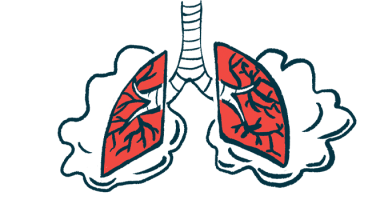Updated Criteria May Help Diagnosis of Cancer-related Diseases: Study
The 2021 criteria are highly sensitive and specific, mostly for patients at high risk

Recently updated criteria to identify cancer-associated diseases like Lambert-Eaton myasthenic syndrome (LEMS) are highly specific and sensitive at detecting these conditions, a recent study reports.
The study, “Real-world application of the updated diagnostic criteria for paraneoplastic neurological syndromes,” was published in the Journal of Neuroimmunology.
Paraneoplastic neurological syndromes (PNS) are a group of disorders that can develop in people who have cancer, but where symptoms are not driven directly or indirectly by the tumor itself, but by other causes such as the body’s immune response against the tumor. LEMS is a form of PNS that is characterized by symptoms such as muscle weakness and commonly develops in people with lung cancer.
Diagnostic criteria for PNS were first published in 2004. In the nearly two decades since, understanding of these disorders has improved substantially, and an updated set of diagnostic criteria was published last year.
Both sets of criteria broadly rely on evidence based on the presence or absence of a tumor, disease-associated antibodies, and symptoms. The newer criteria include more specific guidelines about typical patterns of PNS symptoms and associated cancers and clinical features, with greater variance of scores to include “possible” or “probable” PNS.
For the new study, five researchers in Italy compared the 2004 and 2021 PNS diagnostic criteria for people with suspected PNS treated at their clinic from 2012 to 2021. The study included data on 74 patients, ranging in age from newborn to 80 years at the time of disease onset.
Based on the 2004 criteria, 25 (34%) patients had PNS. According to the 2021 criteria, 18 (24%) had definite PNS, 13 (18%) had probable PNS, and 31 (42%) were classified as having possible PNS, and 12 (16%) as non-PNS.
The two sets of diagnostic criteria generally showed good agreement. Of the 25 patients with PNS according to the 2004 criteria, 22 had definite or probable PNS according to the 2021 criteria. Thus, using the 2004 criteria as a reference point, the 2021 criteria showed a 88% sensitivity (true-positive rate) and 80% specificity (true-negative rate).
Among the few patients where there was discord between the two diagnostic criteria, all of these individuals had forms of PNS other than LEMS.
“The updated 2021 criteria are highly sensitive and specific, mostly in patients with high-risk phenotypes and in recognizing definite or probable PNS,” wrote the researchers, who concluded that the “application of the 2021 criteria improves the diagnosis of patients with PNS.”







